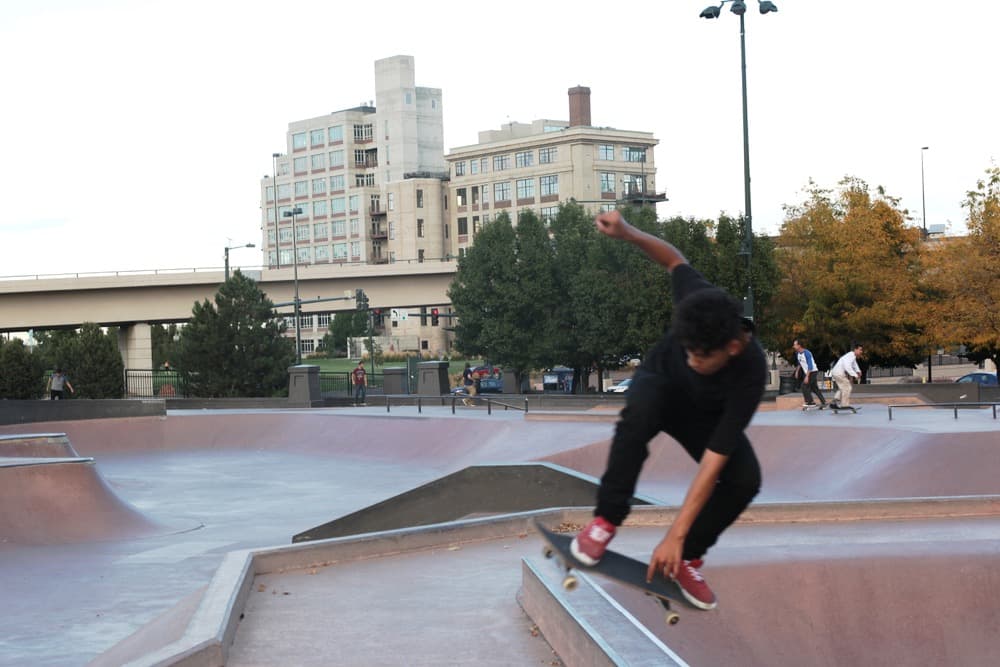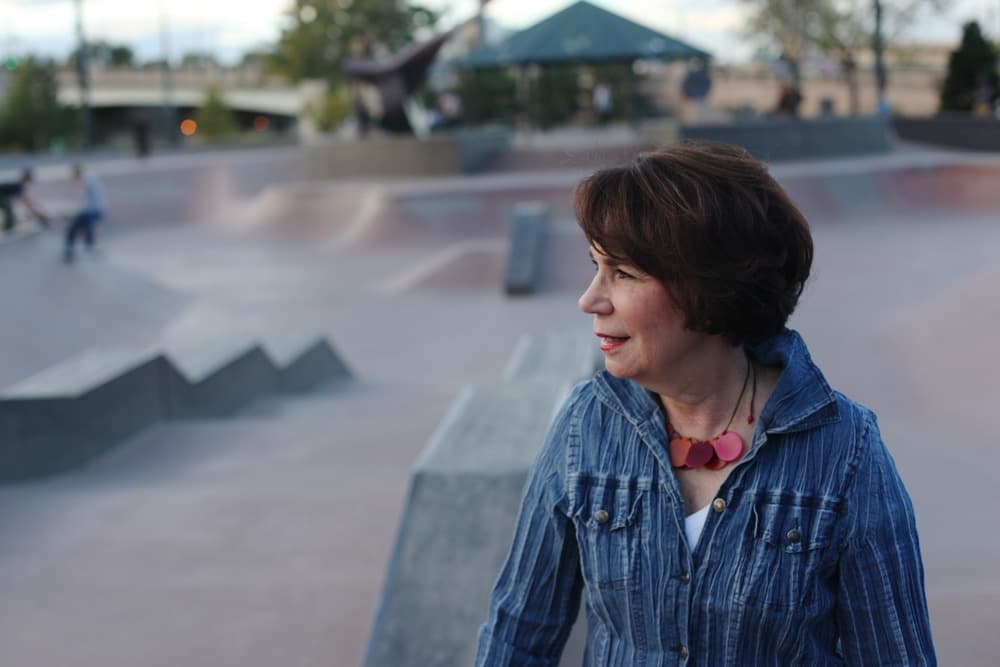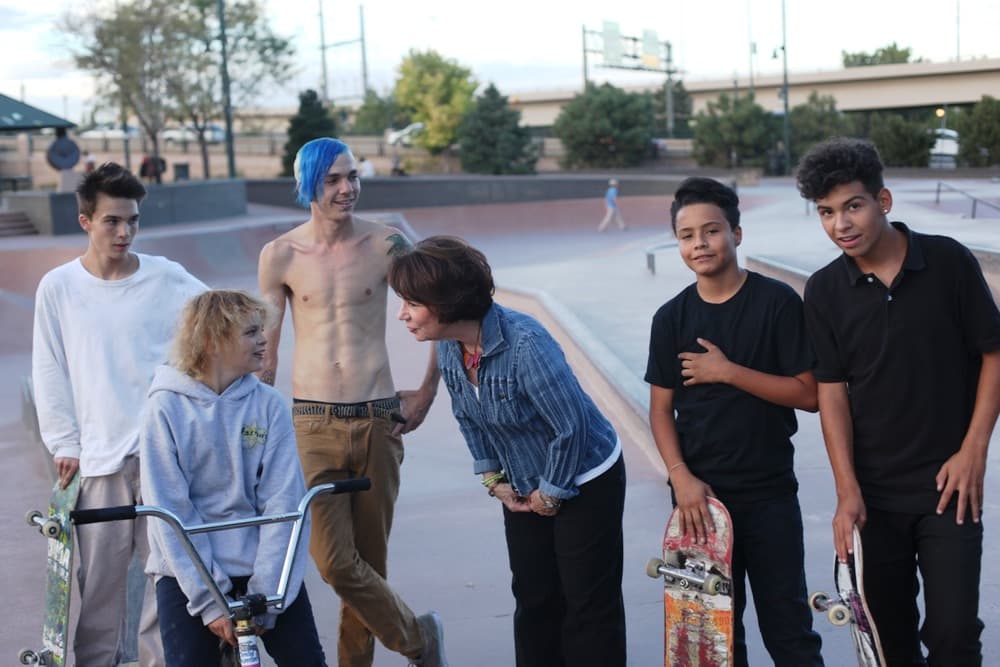Jefferson Park didn't want it. Condo owners on the South Platte thought it would hurt their property values. A cop said it would attract drive-by shootings. Even the Children's Museum wanted nothing to do with it.
Place after place, block after block, the people of Denver rejected a ragtag group of skateboarders who just wanted somewhere to skate. Here's why Denver built one of the largest public skate parks in the country anyway.

Back in the 1990s, the scourge of downtown wasn't "urban travelers." It was skateboarders. They seemed young, directionless and loud, and a lot of downtown business owners either feared or hated them.
"They didn’t wear the polo shirt. They wore the earring. They had the colored hair, the bleached hair," recalled former councilwoman and former state senator Joyce Foster, now 72, sitting for an interview in her spacious brick home in Denver's Lowry neighborhood. "They didn’t look like the preppy kid."
(Foster repeatedly offered me cobbler during our interview. For the record, I accepted. It was delicious. Anyway.)
Skyline Park and the 16th Street Mall, as usual, were the focus of this "unwanted" controversy. A new restaurant wanted to expand its outdoor seating into the park, an illegal but popular skate spot.
The revitalization of downtown Denver was far from a guaranteed thing in 1997, and these kids careening around on boards were seen as threats not just to the architecture but to the people.

"The Downtown Denver Partnership presented an opinion on skaters, that they’re all criminals basically, they need much higher penalties, they need much more enforcement to keep them out of downtown," remembered Dave Stalls, a former deputy manager of parks and recreation. (Stalls also won two Super Bowls as a defensive end, once with the Los Angeles Raiders and once with the Dallas Cowboys, if you're wondering why his name is so familiar.)
Stalls had already been working with youth around Denver, so he took up the skaters' cause at a City Council meeting. After hearing enough opinions bandied about, he took the mic himself.
"I said, 'What exactly is it that scares you about these young people?'" he told me. "'What else would you have these young people do? ... If you don’t want them downtown, where can you provide them a place to go?' It was that simple."
It wouldn't be that simple.
Stalls' speech is part of what convinced Foster that Denver needed a skatepark. What followed would be one of the more unusual city planning processes I've encountered.
"The skaters were kind of dubious that the adults of Denver were really going to come together to build a skatepark. " said Amberleigh Hammond, who at the time was a ska-loving teenager and a part-time employee of Foster's city office.
But the adults knew it wouldn't get built without the kids involved, so Foster's office asked every public high school and middle school in Denver to find skaters who might like to serve on the Skate Park Task Force. They ended up with 80 kids.
As Westword reported back then, many of the skaters at the first meeting had warrants out for their arrest for skating-related trespassing tickets. Their first inspiration was a blueprint that the teenage Hammond found in Thrasher Magazine -- and their ambitions quickly escalated.
Eventually, the city would put $1.5 million and some of Denver's most valuable land into the park.
But first they had to find a place to put it.
It had to be in central Denver and accessible to public transit, Foster said, so kids could actually get there. Not coincidentally, these were the same areas that were becoming the most valuable in a redeveloping central Denver. Foster and her skate crew had to find a place for her task force of undesirables among the promises of new vibrancy and new money.
The first land they tried was a city-owned lot bordering the Children's Museum of Denver on the South Platte. As Foster remembers it, she brought several of the kids for a meeting with the museum's leadership.
"The Children’s Museum wanted nothing to do with this project ... They were mean, so mean," she says. The museum thought the presence of the skatepark would be a danger to its young patrons. "And the kids listened, and I listened, and then we talked back. We said, 'What’s the matter with these children. Because they’re dressed differently?'"
The encounter, she said, left the younger kids with tears in their eyes. Other alternatives were dismissed as too industrial or too remote.
"We looked at one place under a viaduct that the city owned," Hammond said. "It was literally right underneath I-25."

It was the mayor who solved the problem.
Wellington Webb in the late '90s was working on one of the most dramatic redesigns of modern Denver: The rebuilding of the industrial railyard and open space behind Union Station.
One of the first pieces was the construction of Commons Park to replace the empty, trash-strewn fields along the river. (In 1999, two homeless men were found murdered in this area, part of a string of similar killings.)
Webb suggested that the skate park could be built in the new recreational area. He and the park's supporters had already won voters' approval for more than $1 million in bond funding. All they needed was council approval for the site.
Once again, more resistance. Condo owners in the new Flour Mill Lofts worried that the park would be "too loud," despite the fact that they would be separated by busy 20th Street.
"Of course, what they didn’t realize is they had just bought for $500,000 a loft that used to be the shooting gallery for heroin for homeless kids," Stalls said. "It was quite ironic, to say the least."
Then-Councilman Ed Thomas was one of the park's most outspoken critics, with his concerns seeming to fall somewhere between the safety of the kids and the danger they might pose.
"Now that we have this skateboarding park, why don't we spend another million bucks on a knife-throwing park for the kids?" he later told Westword. "How about a drive-by-shooting range while we're at it?"

So, how'd it turn out?
The thing finally opened in 2001, when many of its original advocates had moved on to college. Within its first year, an X Games event and Tony Hawk, who by then was becoming a household name, had both visited the new park.
"We were the largest in the United States at this point -- the largest free skate park in any city," Foster said.
The parks department estimates that the park has 1,000 to 2,000 visitors in an average week, and may hit 10,000 in good weather.
The park in many ways was designed by its future patrons. "There's street, and there's vert, and if you think I know what the difference is, you're wrong," Foster said.
"The most amazing thing to me is, the city let us do this our way," a skater named Charly Lewis told Westword back then. "They actually listened to a bunch of kids with skateboards."


Just for kicks, I thought I'd take Foster down to the skatepark to see what she'd created.
The place was roaring with the sound of wheels on concrete, kids as young as 12 and skaters well into their 30s. In the center, hidden away, I spotted some people passing joints and bottles, but most of the dozens of people were just there to skate.
Foster took a moment to get her bearings, dodging out of skaters' weaving paths a few times. It felt like we were both too old to even be visible to most of the kids -- until I started shouting that "this lady made the skatepark."
Then they came crowding around. "She built the skatepark, man," one repeated to another. They were sweatshirt-hooded or shirtless or blue-haired or frazzled -- and they were genuinely excited to meet a former city councilwoman.
Later, as we left the place, she couldn't help but reveal what an unlikely alliance this really was, the skaters and the City Council.
"Oh, this is hard for a Jewish grandmother," she said, watching yet another kid skid across the space she made.













